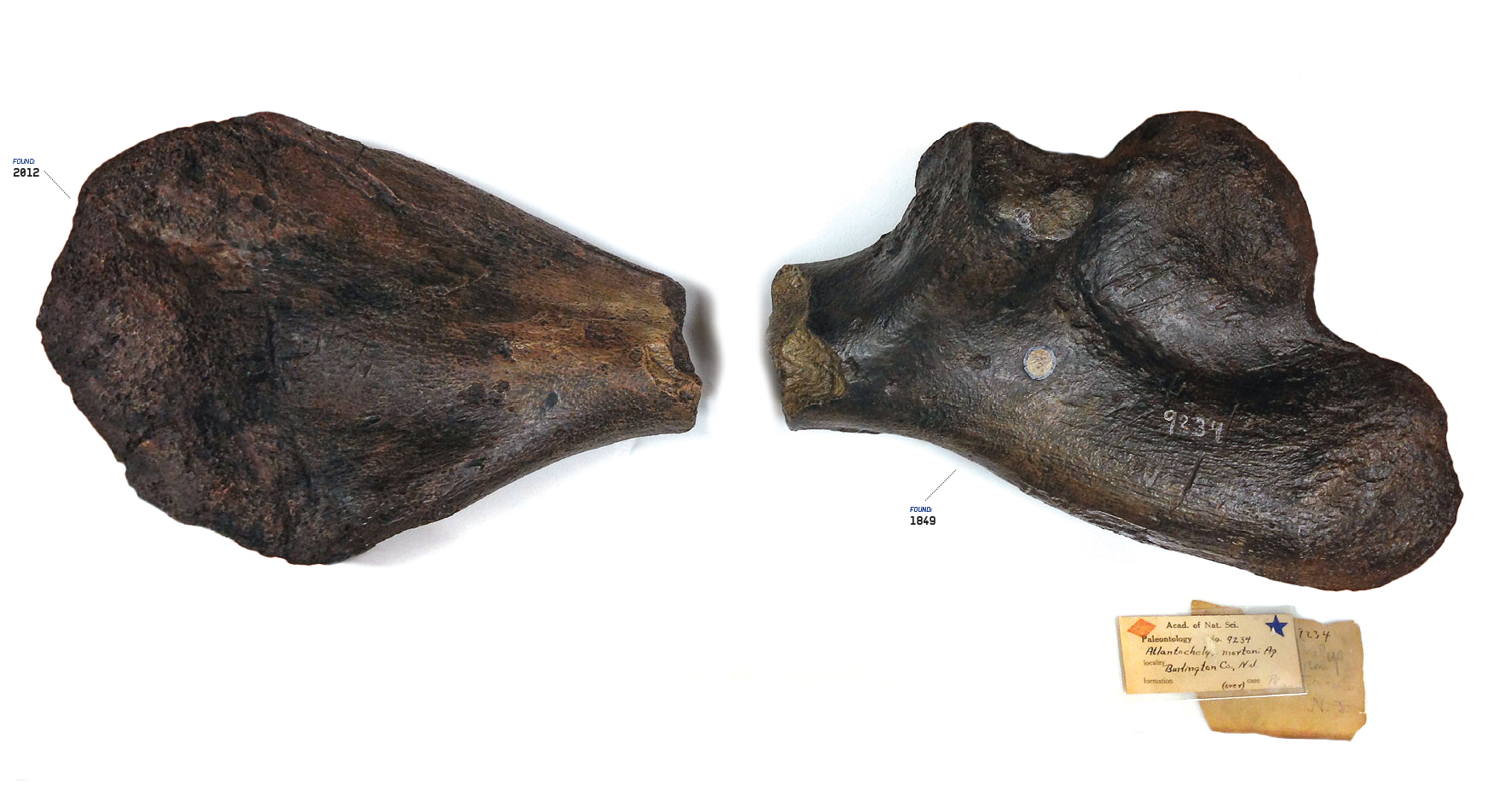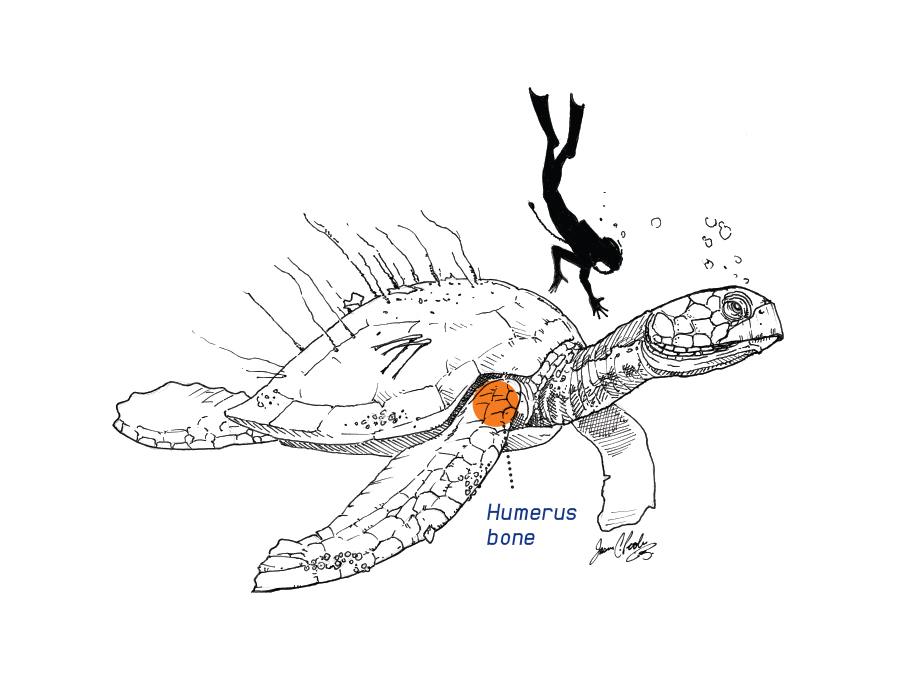
_Ted Daeschler
Daeschler is a professor in the Department of Biodiversity, Earth and Environmental Science in the College of Arts and Sciences and curator and chair of Vertebrate Zoology in the Academy of Natural Sciences of Drexel University.
In 2012, an amateur paleontologist hunting for shark teeth in a brook in Monmouth County, N.J., noticed a bone fossil lying on a grassy embankment.
“I picked it up and thought it was a rock at first — it was heavy,” says Gregory Harpel, an analytical chemist from Oreland, Pa.
Harpel brought the bone to Jason Schein, assistant curator of natural history at the New Jersey State Museum, who along with David Parris, the museum’s curator of natural history, recognized the fossil as a humerus — the large upper arm bone — from a turtle, that was broken so that only the distal end, or end nearest to the elbow, remained.
Parris joked with Schein that perhaps it was the missing half of another partial turtle limb housed in the collections at the Academy of Natural Sciences of Drexel University. The bone in the Academy’s collection was also broken at the shaft.
When Schein brought Harpel’s fossil to the Academy, sure enough, the bones matched.
“As soon as those two halves came together, like puzzle pieces, you knew it,” says Drexel’s Ted Daeschler.

PERFECT_MATCH
The two partial limb fossils from the ancient sea turtle Atlantochelys mortoni fit together perfectly, leaving little room for doubt that they are from the same bone. The distal half (left) was discovered in 2012; the proximal half (right) has been in the collections of the Academy of Natural Sciences of Drexel University for more than a century and is shown with its original labels. It was first described in 1849.
The surprising puzzle assembly upsets conventional wisdom in paleontology, where it is believed that fossils found in exposed strata of rock will break down from exposure to the elements if they aren’t preserved, at least within a few years — or decades at the most.
There was no reason to think a lost half of the same old bone would survive, intact and exposed, in a New Jersey streambed from at least 1849 to 2012.
The Academy’s older bone was also unique, making a perfect match seem even more unlikely. It was the first, or type specimen, of its genus and species, Atlantochelys mortoni, and was the only known fossil specimen from that genus and species.
It remained so until that fateful day when Schein carried the “new” New Jersey fossil to the Academy, where Academy paleontology staffers Jason Poole and Ned Gilmore connected the two halves. The perfect fit between the fossils left little space for doubt. Stunned by the implications, Schein and staffers called Daeschler into the room.
“Sure enough, you have two halves of the same bone, the same individual of this giant sea turtle,” says Daeschler. “One half was collected at least 162 years before the other half.”
Now, the scientists have evidence that exposed fossils can survive longer than previously thought. They report their remarkable discovery in the 2014 issue of the Proceedings of the Academy of Natural Sciences of Philadelphia. The find was also featured in the April 2014 issue of National Geographic magazine.
“The astounding confluence of events that had to have happened for this to be true is just unbelievable, and probably completely unprecedented in paleontology,” says Schein.
The scientists believe that the entire unbroken bone was originally embedded in sediment during the Cretaceous Period, 70 to 75 million years ago. Those sediments eventually eroded and the bone fractured millions of years later during the Pleistocene or Holocene, before the bone pieces became embedded in sediments and protected from further deterioration for perhaps a few thousand more years until their discovery.

